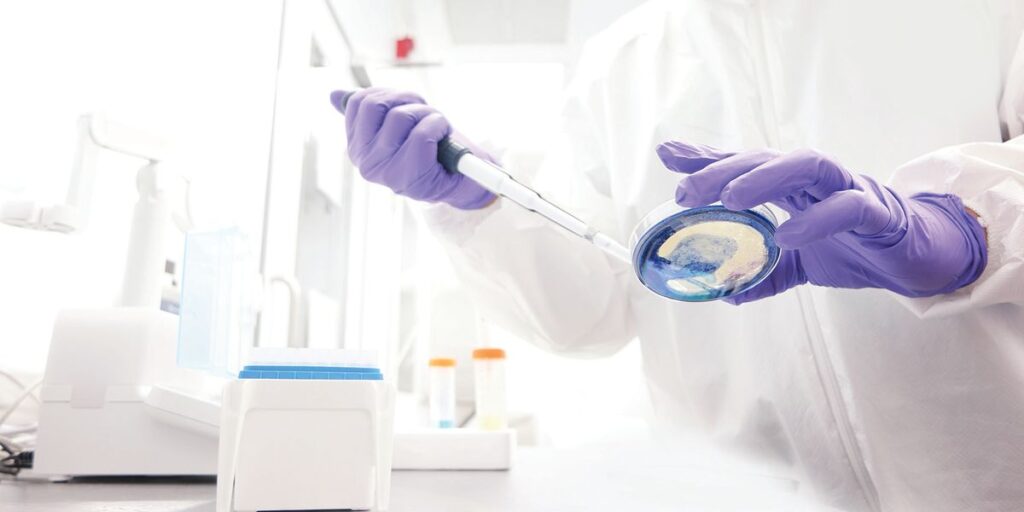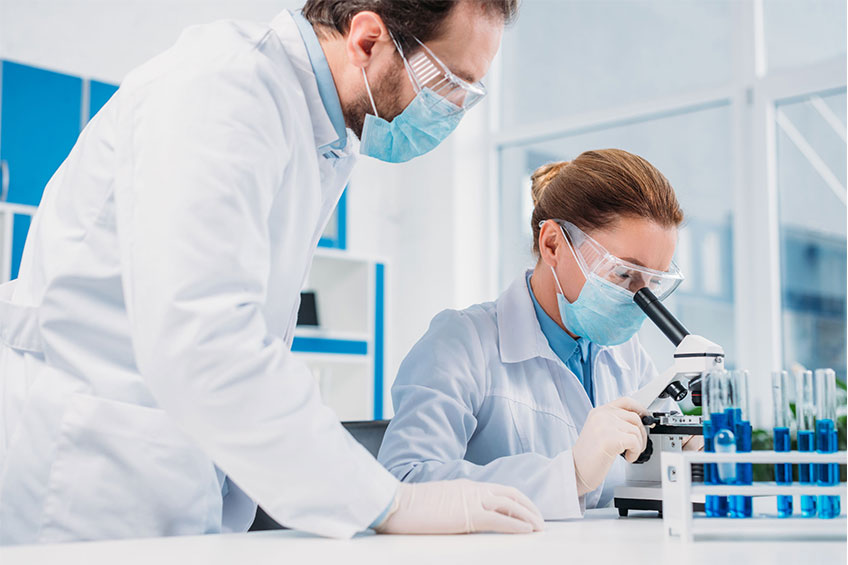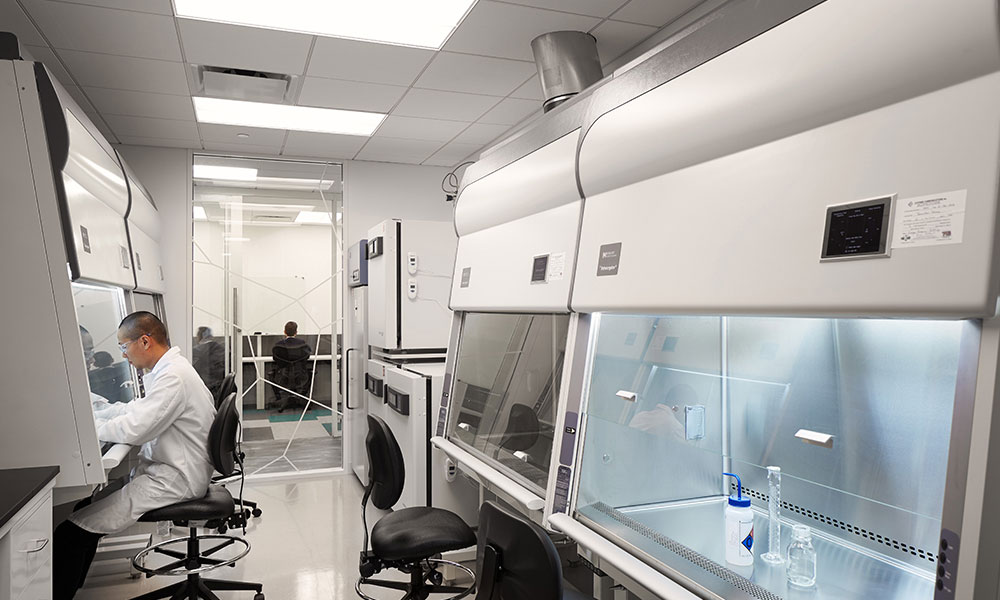Introduction
Biosafety laboratory, also known as biosafety containment for laboratories, is a biological laboratory and animal laboratory that can avoid or control the hazards of harmful biological factors being operated and meet biosafety requirements through protective barriers and management measures.
A biosafety laboratory is a facility that specializes in the research and treatment of highly dangerous or potentially dangerous microorganisms. Its goal is to prevent these microorganisms from leaking or accidentally releasing into the environment and to ensure the safety of staff and the public. These laboratories usually take strict protective measures, including advanced filtration systems, negative pressure spaces, and strict adherence to operating procedures, to minimize risks.
Biosafety laboratories play a vital role in responding to public health emergencies. When faced with the threat of new pathogens, these laboratories are able to respond quickly and conduct relevant research in order to formulate effective prevention and control measures in a timely manner. For example, in the early stages of the COVID-19 outbreak, biosafety laboratories became the main place for testing and studying the new coronavirus, providing important support for the global fight against the epidemic.
The laboratory is an essential place for scientific research. According to the level of danger, including the infectiousness and harmfulness of infectious pathogens, internationally, biological laboratories are divided into four levels according to the biosafety level (BSL): P1, P2, P3 and P4.
Composition
The biosafety laboratory should consist of the main laboratory, other laboratories and auxiliary rooms.

Classification
Based on the degree of biological danger of the objects handled by the laboratory, the biosafety laboratory is divided into four levels, among which the first level has the lowest requirement for biosafety isolation and the fourth level is the highest.
Level 1:
The harm to humans, animals, plants or the environment is low, and there are no pathogenic factors that cause disease to healthy adults, animals and plants.
Level 2:
The pathogenic factors that are moderately harmful or potentially dangerous to humans, animals, plants or the environment will not cause serious harm to healthy adults, animals and the environment. There are effective prevention and treatment measures.
Level 3:
It is highly dangerous to humans, animals, plants or the environment, mainly infecting people with serious or even fatal diseases through aerosols, or pathogenic factors that are highly harmful to animals, plants and the environment. There are usually preventive and treatment measures.
Level 4:
Highly dangerous to humans, animals, plants or the environment, transmitted through aerosols or unknown transmission routes, or unknown, dangerous pathogens. No preventive treatment measures.
Biosafety Level
Basic laboratory-Biosafety Level 1
Basic laboratories are suitable for those that have been determined not to cause any immediate disease to adults or pose minimal risk to laboratory personnel and laboratory personnel. Such laboratories can handle a wide range of common pathogens, such as canine infectious hepatitis, non-infectious Escherichia coli, and non-infectious bacteria and tissue culture. The biohazard prevention measures required at this level are minimal, requiring some gloves and face protection, and laboratory personnel must be supervised by scientists with general microbiology or related scientific training and must be trained in advance during the procedures performed in the laboratory.
Safety laboratory-Biosafety Level 2
This type of laboratory is similar to Biosafety Level 1, but its pathogens are moderate and potentially dangerous to personnel and the environment. This type of laboratory is more capable of handling a wider range of pathogens that only cause mild illness to humans or are difficult to survive in aerosols in the laboratory environment. Such as Clostridium difficile, most of the Chlamydia phylum, Hepatitis A, B and C, influenza A, BSL-2 BSL-1 difference is:
Laboratory personnel and personnel handling pathogens must be scientists with specific training and advanced training
Restrict access to specific personnel during experiments
Take extreme precautions against contaminated items; can be created in a biosafety cabinet or other physical containment equipment
When infectious aerosols or sprays may be produced, they must be carried out in a secondary biosafety cabinet

Highly secure laboratory-biosafety level 3
This level is suitable for clinical, diagnostic, teaching, scientific research, or drug production facilities. Such laboratories specialize in handling local or foreign pathogens that may cause serious or potentially fatal diseases through inhalation. These pathogens include a variety of bacteria, parasites and viruses that can cause serious and fatal diseases in humans, but for which there are treatments, including Bacillus anthracis, Mycobacterium tuberculosis, Leishmania, Chlamydia psittaci, West Nile virus, Venezuelan equine encephalitis virus, Eastern equine encephalitis virus, SARS coronavirus, Salmonella typhi, Rickettsia burnetii, Rift Valley fever virus, Rickettsia and Yellow fever virus.
Laboratory personnel must have specific training in pathogenic and potentially lethal or pathogenic pathogens and must be supervised by a competent scientist with experience in this area.
All procedures involving infectious materials are performed in a specially designed fume hood in a biosafety cabinet or other physical containment device/personnel wearing appropriate personal protective clothing and equipment.
The laboratory has special engineering and design features.
Highest (highest) safety laboratory – Biosafety Research Level 4
This level requires handling of dangerous and unknown pathogens that may pose aerosol-transmitted pathogens or pose a high personal risk, and for which there is still no known vaccine or treatment, such as Argentine and Congo hemorrhagic fevers, Ebola virus, Marburg virus, Lassa fever, Crimean-Congo hemorrhagic fever, smallpox and various other hemorrhagic diseases.
The use of positive pressure protective clothing with independent oxygen supply is necessary and mandatory when handling such biohazardous pathogens. The four entrances and exits of the biological laboratory will be equipped with multiple showers, vacuum chambers and ultraviolet light chambers, and other safety precautions designed to destroy all traces of biohazards. Multiple airlocks will be widely used and electronically protected to prevent opening two doors at the same time. All air and water services will be subjected to similar decontamination procedures as those from Biosafety Level 4 (or P4) laboratories to eliminate the possibility of accidental release. When a pathogen is suspected or may be resistant, it must be handled in a BSL-4 laboratory until sufficient data is obtained to confirm that it must continue to work in this specification laboratory or be transferred to a lower level laboratory.
Laboratory staff must have specific and in-depth training and understand the standards and special measures, containment equipment and design features for the extremely dangerous infectious agents they are handling. They will be supervised by qualified scientists who are trained and have field experience in handling these pathogens and access to the laboratory is strictly controlled by the laboratory director.
The laboratory is a separate building or a building in a controlled area, and is completely isolated from other buildings in the area. And the laboratory must establish a protocol to prevent contamination, frequently use negative pressurization equipment and prepare or adopt a specific equipment operation manual, so that even if the laboratory is compromised, the outbreak of pathogens transmitted through aerosols will be severely suppressed, and all activities in the work area are limited to Class III biological safety cabinets, or Class II biological safety cabinets, and only people with life support systems and positive pressure ventilation can use them.
Why Choose Us?

CNMEDITECH is dedicated to the long-term research of the medical equipment market. Our mission is “People oriented and win-win strategy,Matching the real needs of the region with a focus on human health,To be the world’s first-class medical field solution expert”.We have been manufacturing high-quality medical device products for more than ten years.
We have built our reputation on delivering quality healthcare solutions on time and on budget.All our products comply with international health and safety regulations and all products come with a warranty.
Are you still worrying about your customer’s product needs?Are you still angry that the product is expensive? We have various medical equipment and support personalized product customization.
Our company has many styles to choose from.In addition, we have high-quality pre-sales consulting guidance and professional after-sales service, all to meet your needs.
Whether it is a cost-effective or high-end product, there will always be something suitable for you.If you have any needs for products, you can ask us, our factory will meet your needs as soon as possible, and we will make every effort to provide you with solutions.Feel free to send us your inquiries.








